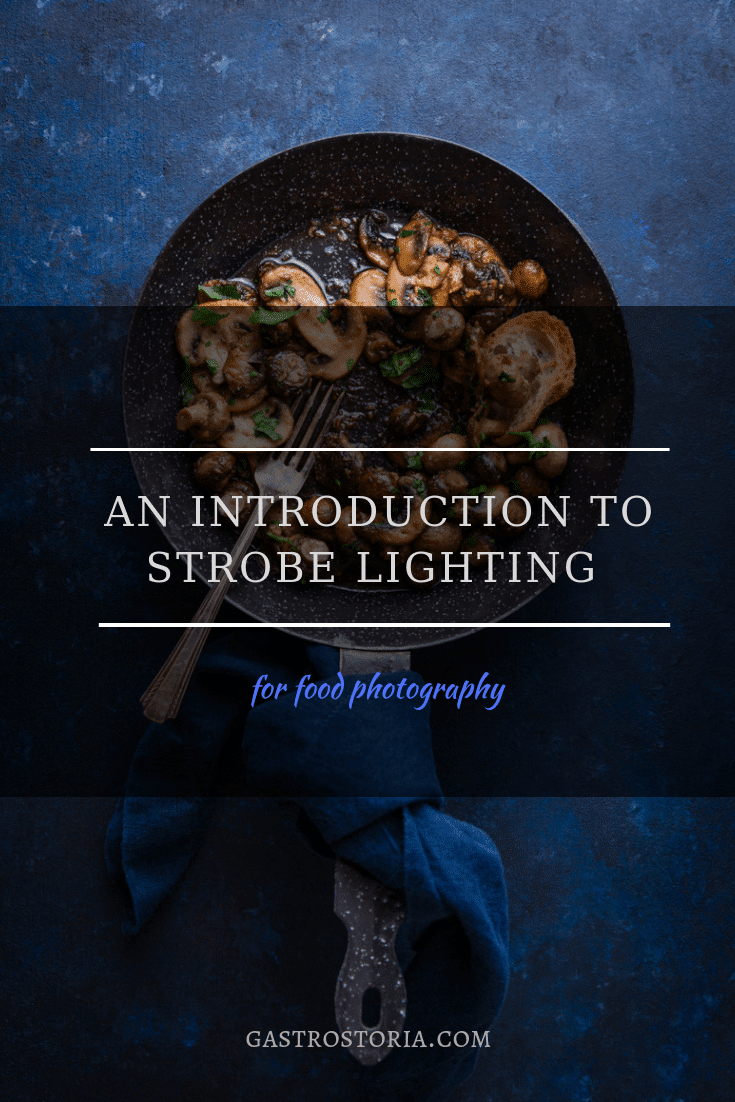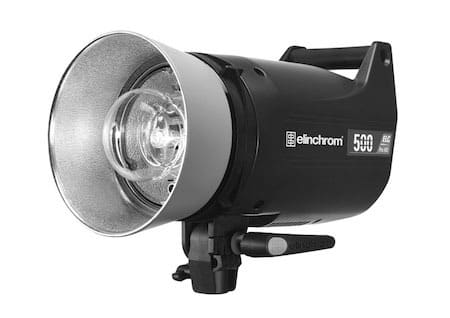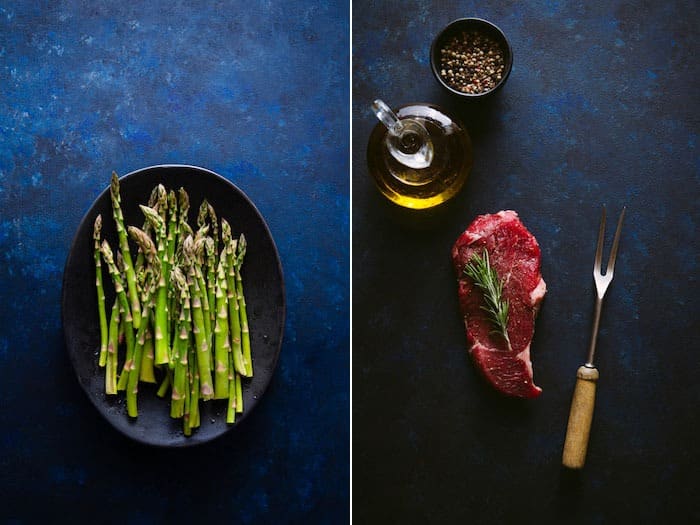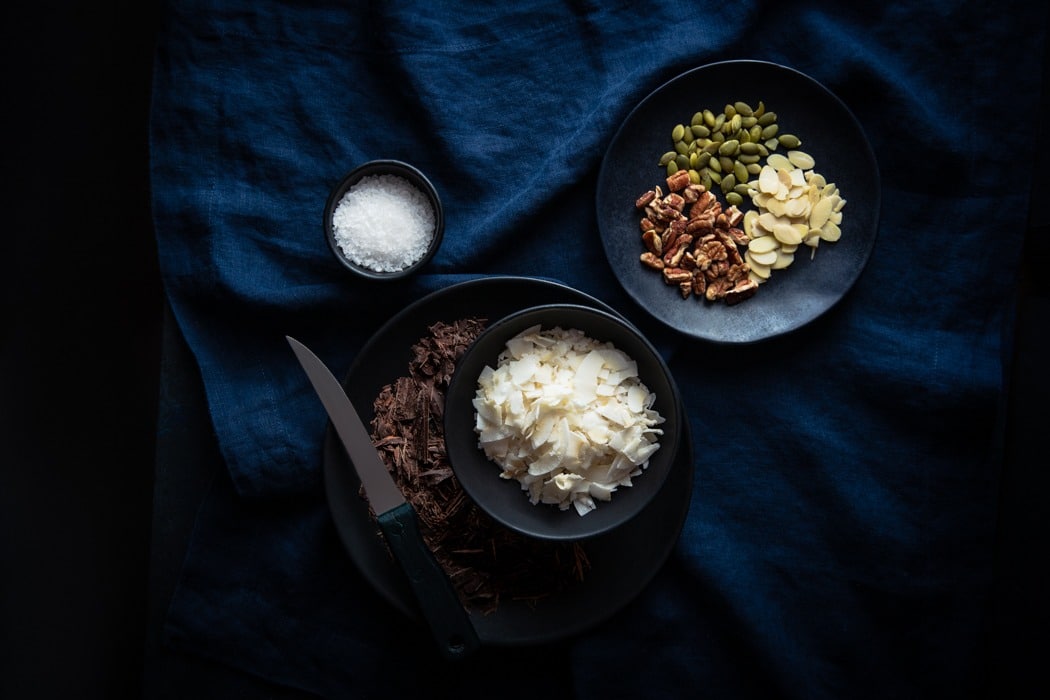There are various types of strobe lighting.
Strobe is flash photography and it is the standard in the commercial food world.
There are various types of strobes as follows:
Speedlites
Speedlites are small flash heads that can be mounted onto your camera. We call this on-camera flash.
I don’t recommend you shoot food this way because it results in very ugly, flat looking food photography.
A speedlite is a small light source and when it’s mounted onto your camera, it will give you hard and flat light–the opposite of the soft look we want when shooting food.
Instead, your speedlite should be mounted on a stand and placed off to the side.
Speedlites are great for producing pictures for your blog, or for editorial/magazine style images, where we usually want shallow depth–of-field and selective focus. These types of images don’t require a lot of light to produce.
However, if you’re doing advertising or product packaging work and need to get everything in focus, you’ll need a lot of light. Speedlites don’t have a lot of power output.

Monoheads
A monohead is a type of flash where the power source is housed in the light head. All you need to do is to plug it in to an electrical outlet.
Some companies like Profoto make monoheads with a battery encased in the light head, and don’t require electricity. This allows use them outdoors, like on portrait shoots.
Monoheads can be adjusted in very fine increments to produce the amount of light that is required. They do have a maximum voltage, usually up to 1000 watt seconds.
For food photography, most of the time you need only about 500 watt seconds.
The exception is advertising photography, which, again, requires an artificial light with a lot of power.
I shoot most of my assignment with one Elinchrom monohead. If I need more power for a commercial job, I’ll use two monoheds or rent a more powerful strobe.

I use the Elnchrom HD Pro 500
Strobe with Battery Packs
The most powerful type of strobe is plugged into a battery pack. This pack often looks similar to the battery in your car.
Speedotron and Broncolor are a couple of popular brands.
The strobe head is plugged into the battery, which puts out more power than a monohead. You use the dials on the power pack to control the power coming out of the head. This is measured in F-stops.
Monoheads and strobe lights with battery packs come with a modelling light. This is a constant light source that you can switch on to see what you’re doing, and to get an idea of how the light will fall on your subject. With some strobes, the modelling light is bright enough to use to shoot video.
What You Should Know About Working With Strobes
When you start to work with strobe light as opposed to natural light, you need to make a big shift in the way you’ve learned to do things.
When shooting in natural light, a lot of your control comes from your shutter speed.
For example, I always advise food shooters to work with a tripod and adjust their shutter speed instead of ISO when working in lower light.
You can’t do this when working with a strobe, whether it’s a speedlite or a monohead.
When working with strobe, you can’t go beyond the sync speed of your camera. This is usually anywhere between 1/100 to 1/250 of a second, depending on your camera. If you go beyond this, you will get a black band on your image.
When using flash, your exposure is more based on your F-stop than your shutter speed. You control the light coming out of your strobe by changing the F-stop. This is why you need to meter your scene.
In commercial photography, you need to shoot at high F-stop numbers like F16 or F22 to get everything sharp and in focus. Therefore you need strobes with a lot of power. A speedlite or 300 watt Godox won’t do. Save those for your blog or editorial photography.
Speedlites are a good option for restaurant photography. Restaurants are usually pretty dark, so boosting the ambient light can help you get properly exposed images without the noise that comes with cranking up your ISO.
This is called mixed lighting. This is when you have a combination of artificial light and natural light.
You get mixed lighting when you go below the sync speed of your camera. Shutter speed doesn’t make that much of a difference when it comes to flash photography, but going below your sync speed will allow that natural light to start to come in.
If you’re just starting to get into strobe lighting or are curious about it, hopefully this post gave you a bit more of an understanding on flash for food photography.
Stay tuned for more posts on this topic. In the meantime, ask me any questions you have in the comments below.




is strobe light is same as continuous light from LED?
No, it’s a high intensity flash unit, often of high voltage.
It was interesting when you explained that using strobe light takes away control from the shutter speed of the camera. My brother is looking into getting event and backlighting to use at the event for his company next month. I’ll pass along these tips so he can make sure to prepare properly to use the strobe lights.
Yes, with flash the shutter speed is not very relevant. It’s controlled by aperture and the power of the strobe.
Can you mix constant lighting with monohead strobes? What’s the setup for that? thanks!
Absolutely. You just have to make sure your white balance matches and that you shoot below your sync speed to let in ambient light. Shutter speed will control the ambient light.